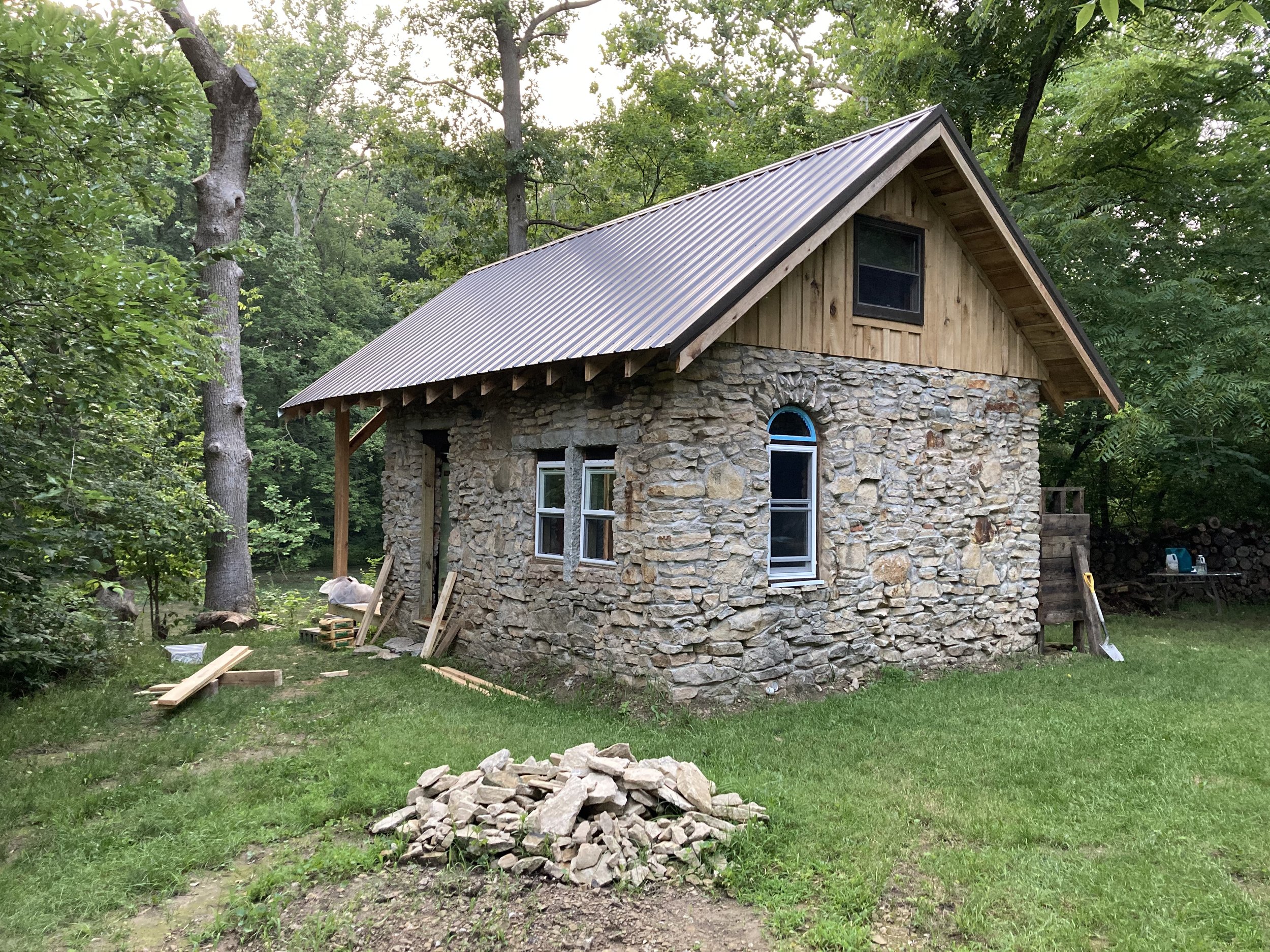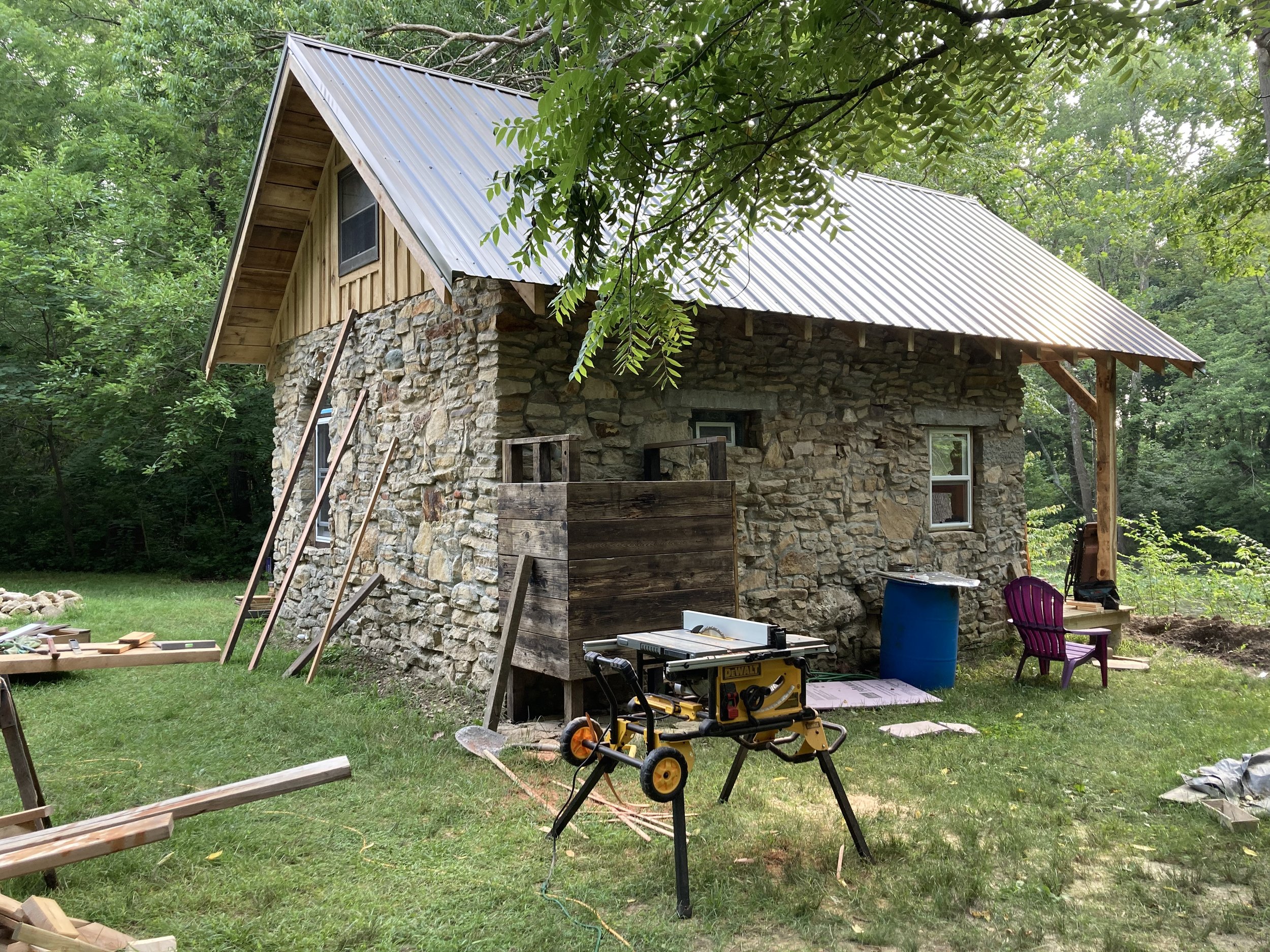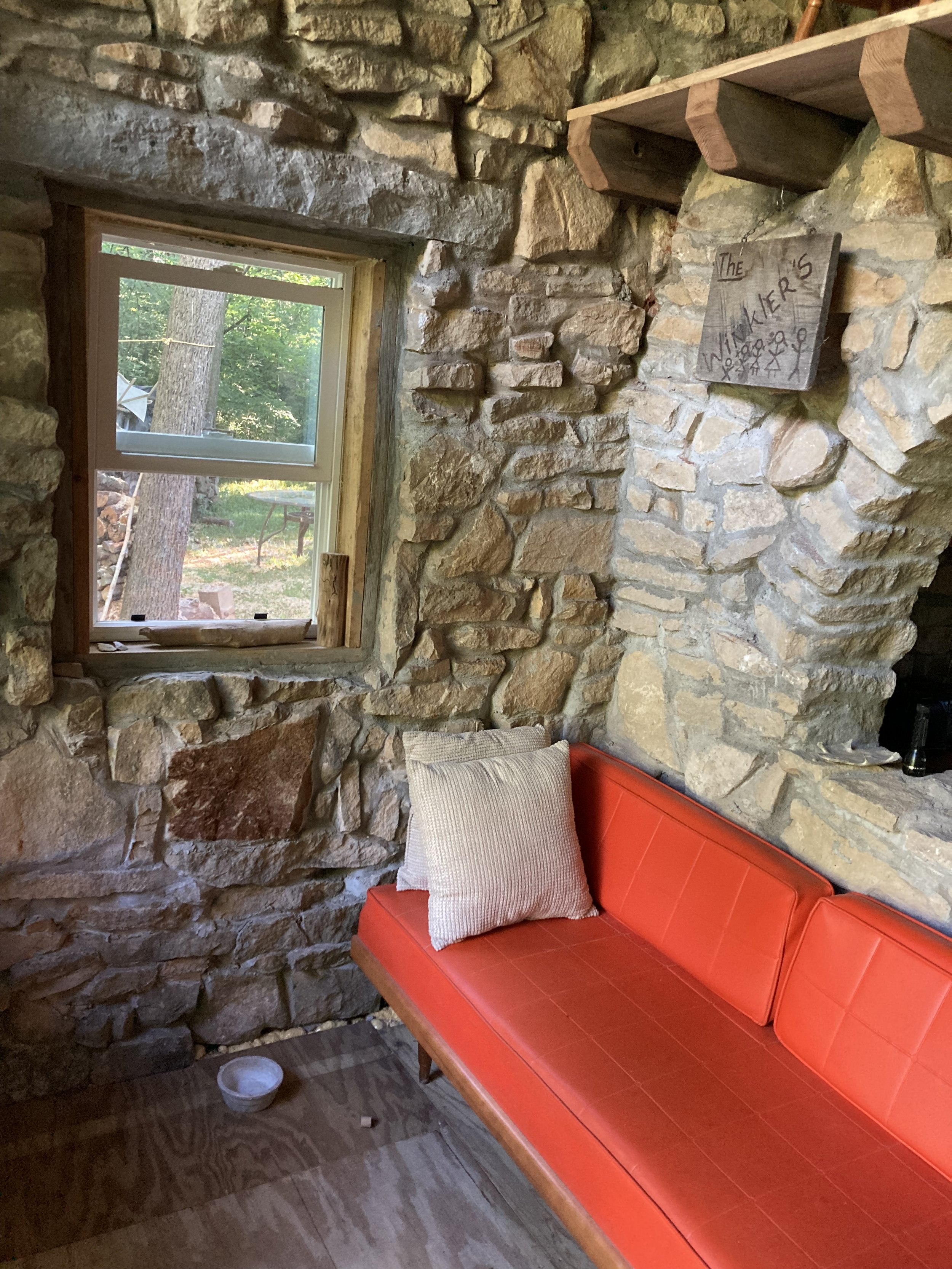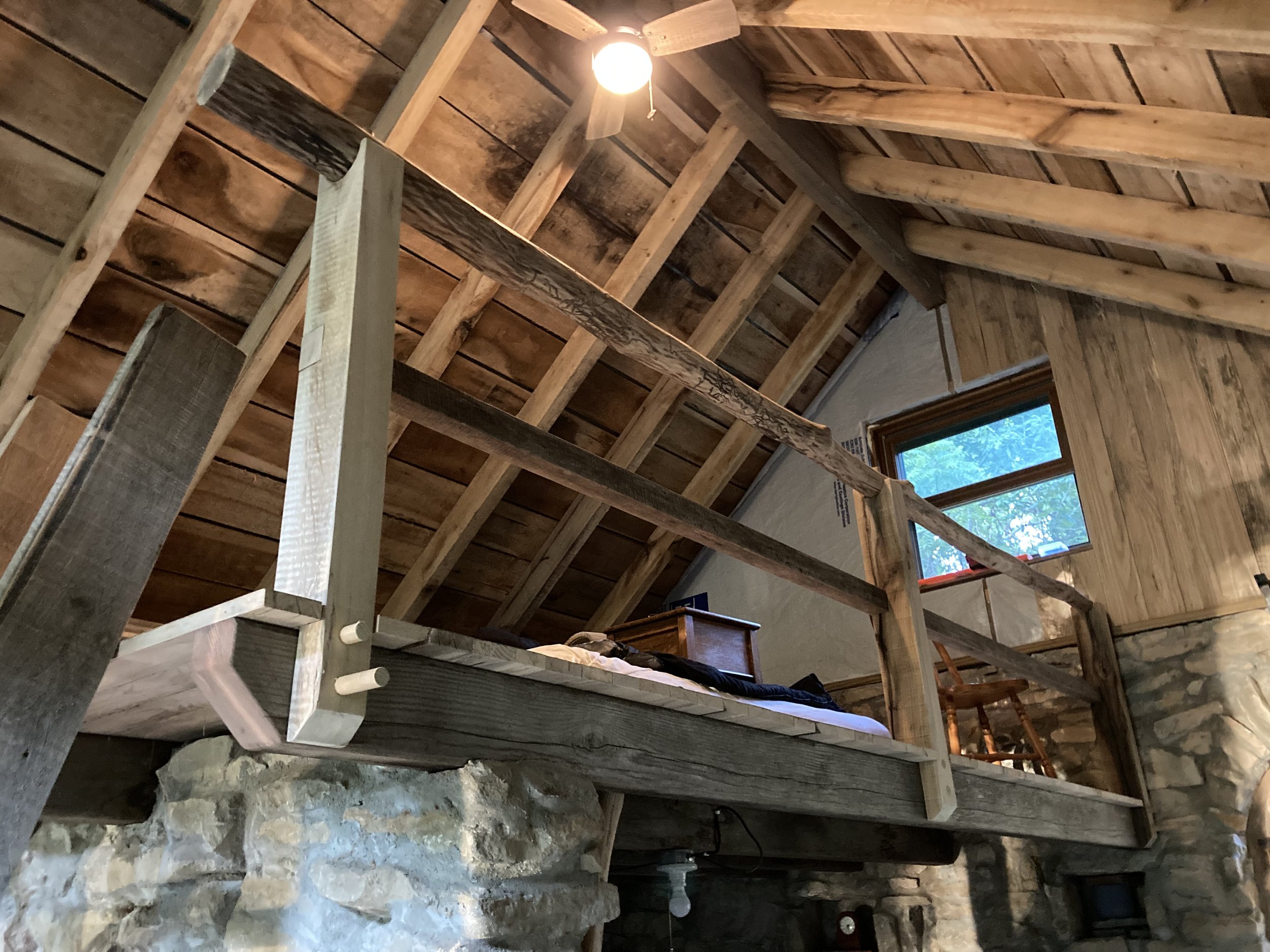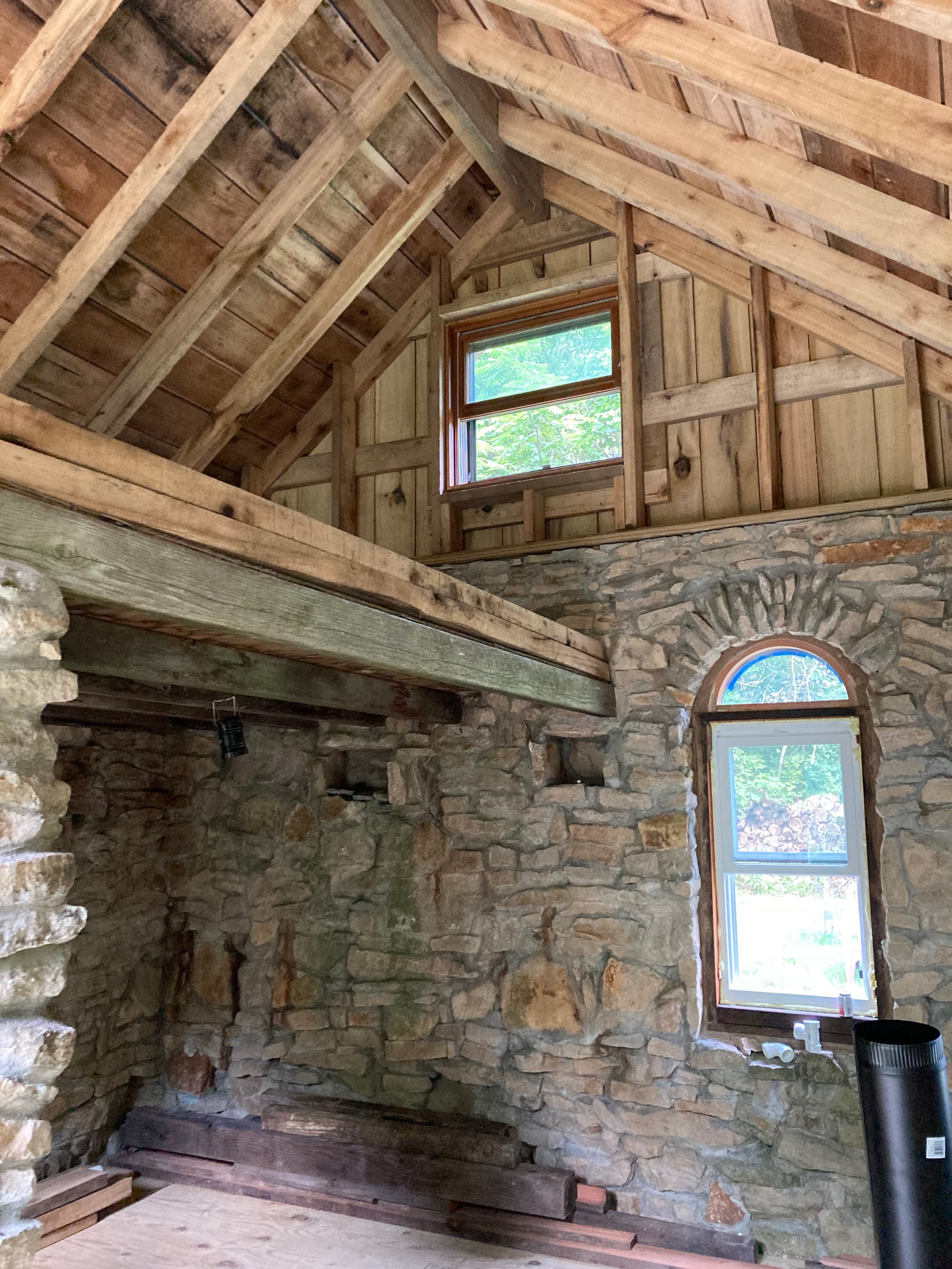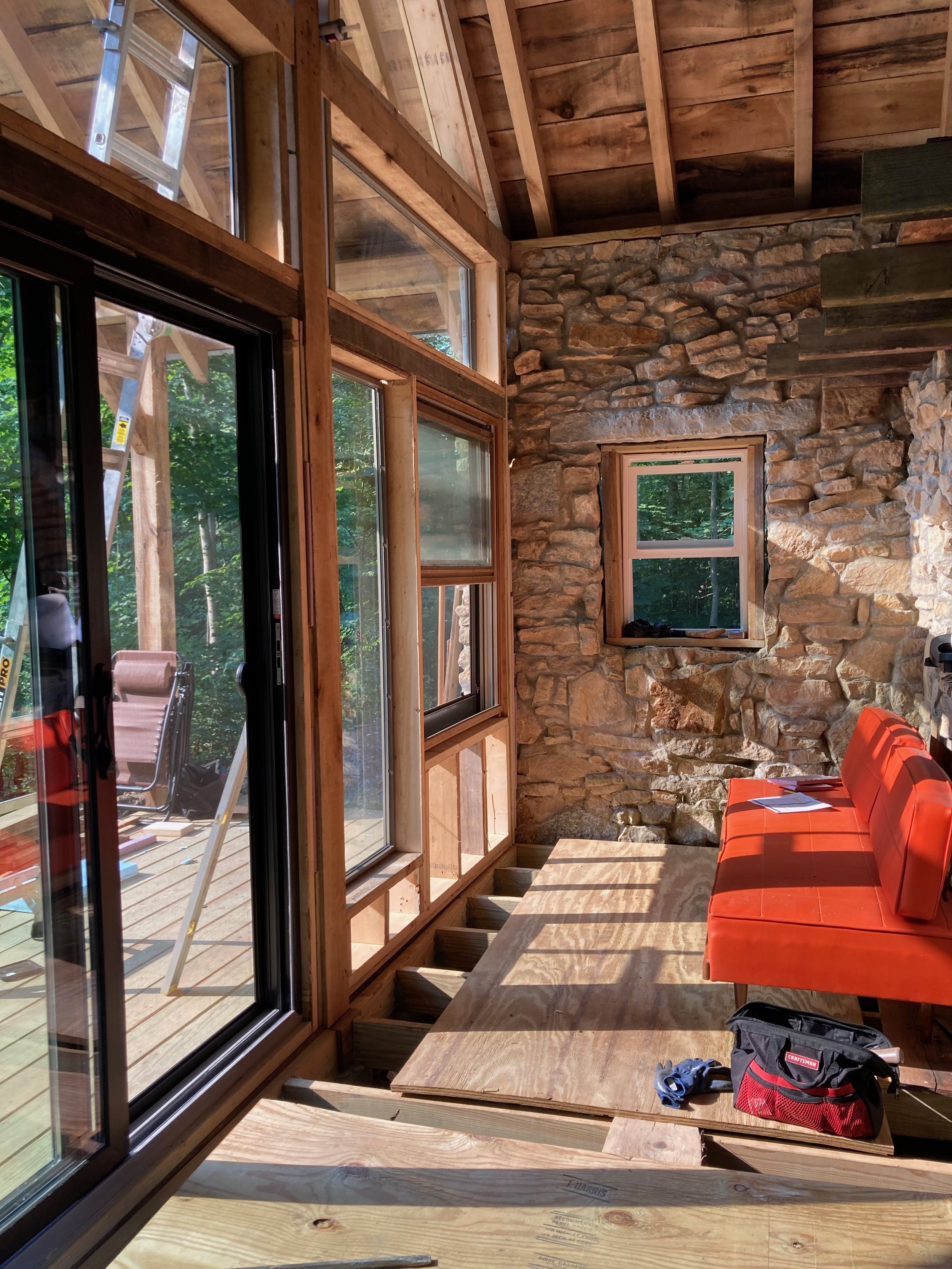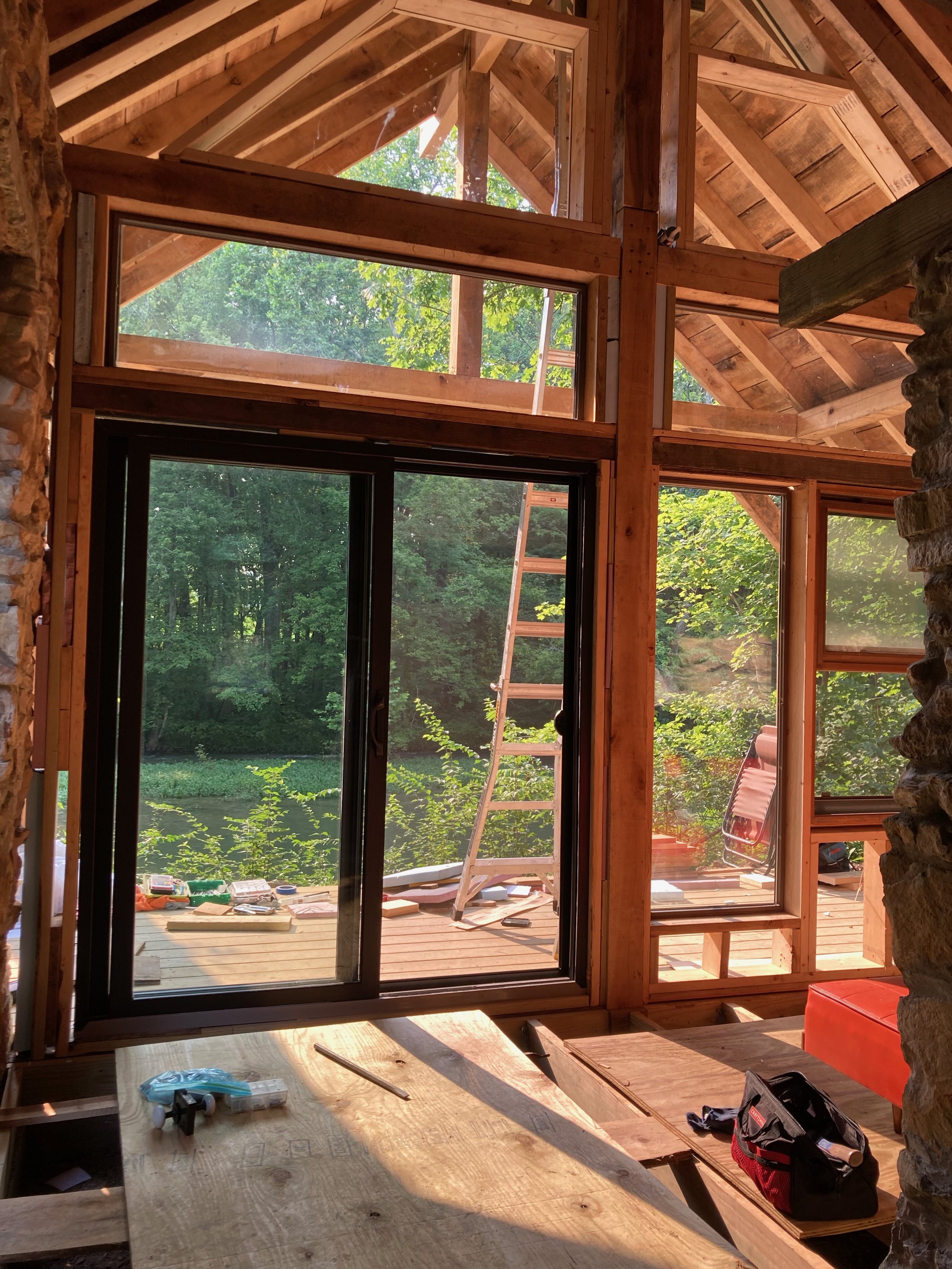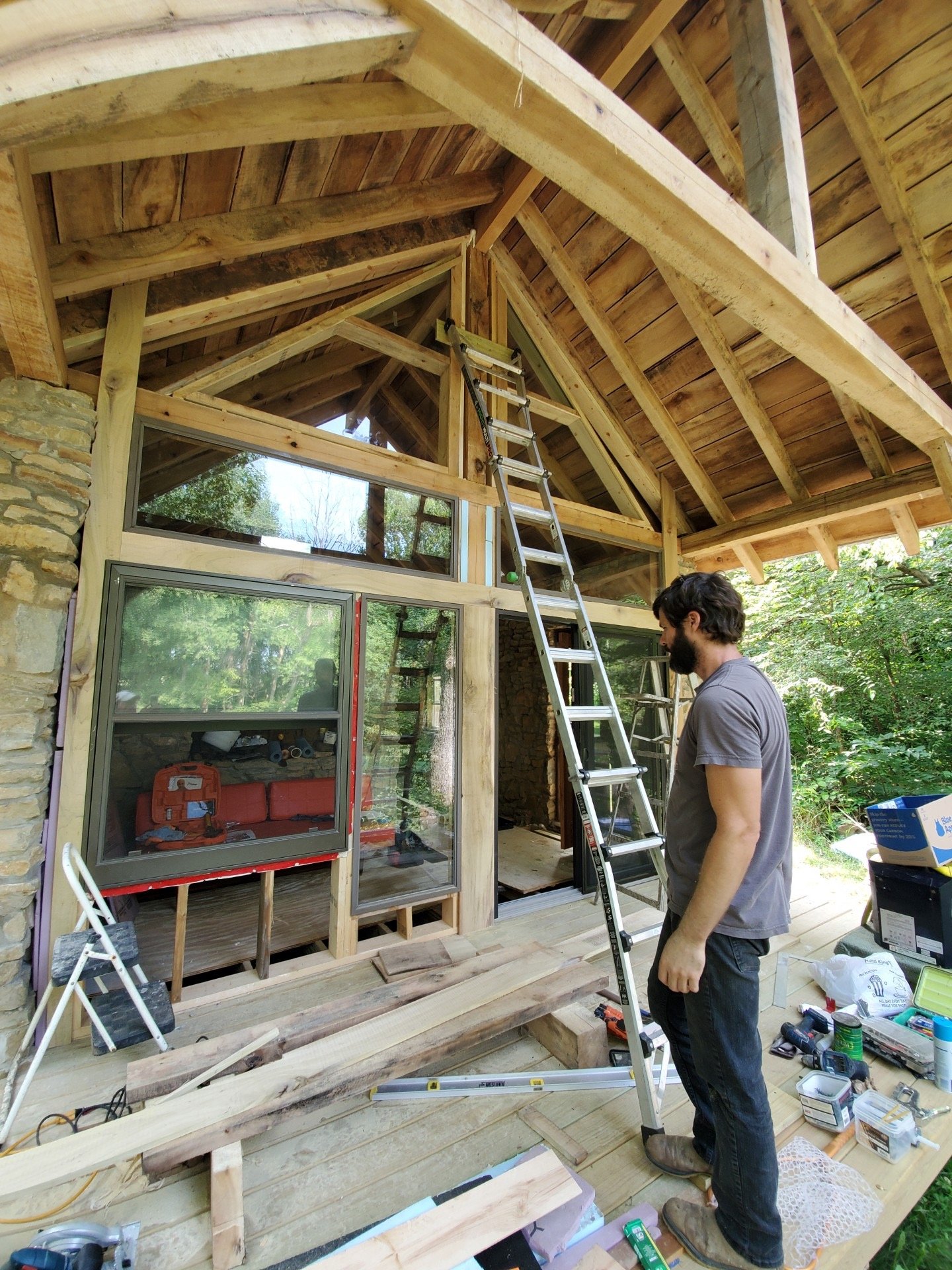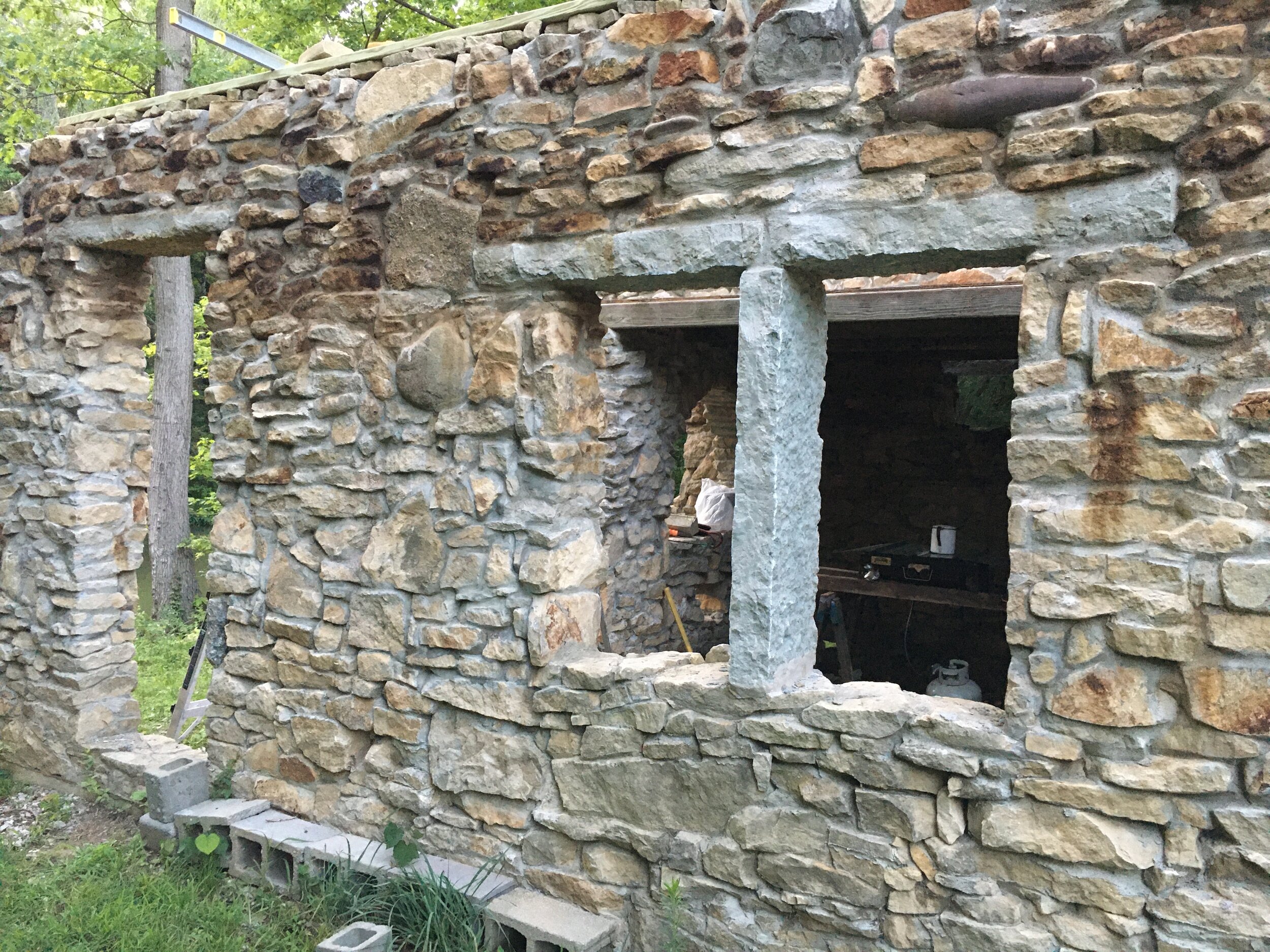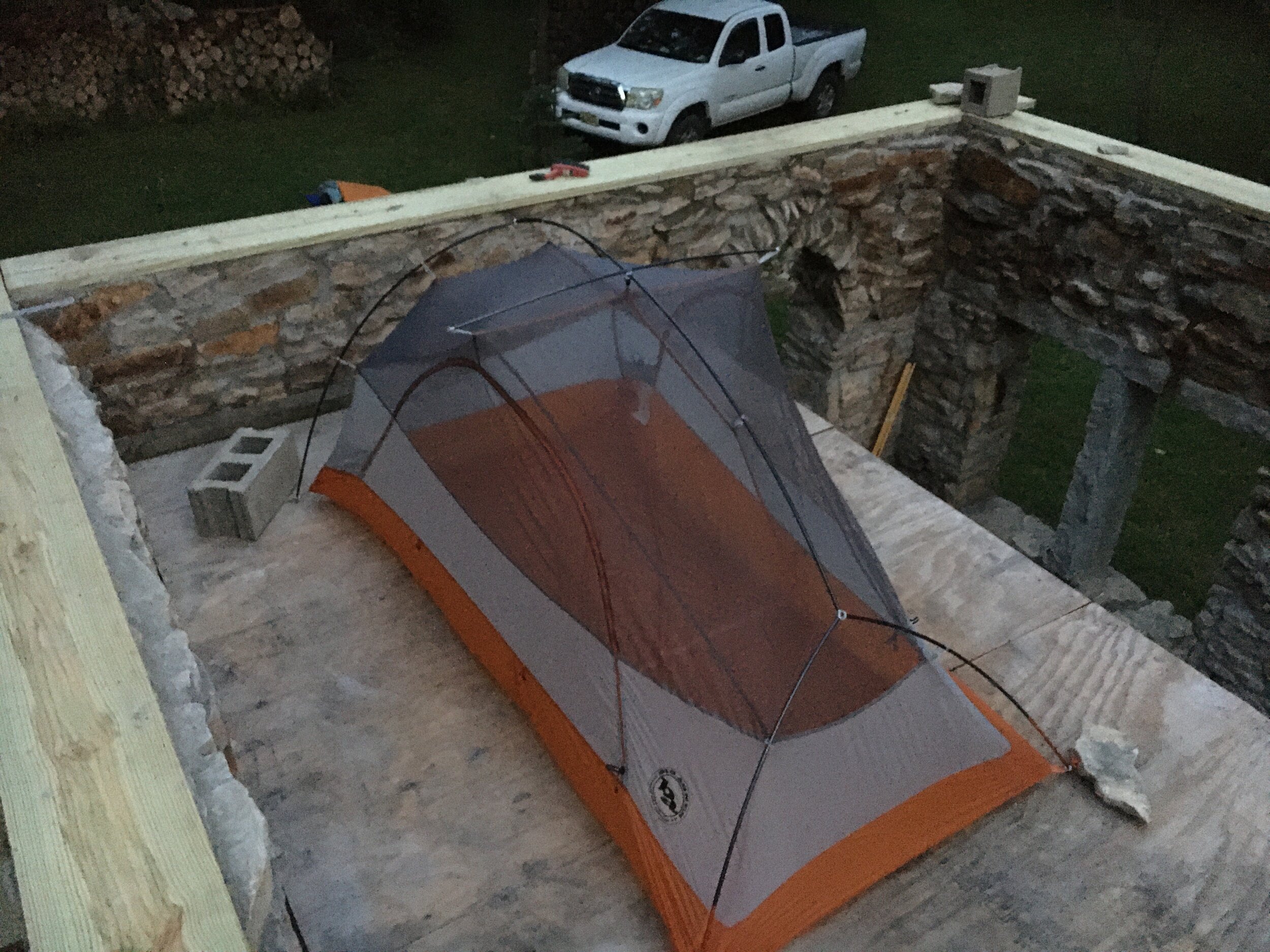The Land Project
The Land Project encompasses seven-acres in Indiana's rural rolling Rush County countryside along the Flatrock River. This patch of forest and grassland has a freshwater spring and a forest variety of mostly shellbark hickory, black walnut, oak, ash, hackberry, redbud, basswood, poplar, maple, some beach, and sycamore. Black rasberries, blackberries and mulberries ripen in late June and early July.
The Flatrock River stretches some 90 miles southwesterly from east-central Indiana to Columbus, where its gathered waters meet the east fork of the White River. The White flows into the Wabash, the Ohio, and ultimately the largest river system in North America, the Mississippi River watershed. As the Flatrock ambulates Indiana's dense farmland and mixed hardwood forests its waters reveal the abundant Indiana flagstone that give the river its name.
The structure is built entirely of local limestone. The framing is a combination of local and reclaimed materials. I started this project in 2007 after thru-hiking the Appalachian Trail. I was inspired by the eccentric trail shelters along the way. Commuting from Minnesota, I have laid stone for a few weeks each summer. I wanted to create a gathering place for friends, family, and artists in the place that had so much impact on my childhood and continues to fuel my creative impulses and friendships.
We completed the stonework in 2020. The local Amish community milled and framed the roof with local poplar. My dad and I (and some friends), have been finishing the interior. The interior structures (flooring, cabinetry, etc.) will utilize emerald ash borer ash from the property and possibly some recycled beech corn crib timber from a family barn.
Unsurprisingly, the land that is now Indiana, was once home to complex range of people with a range of cultural traditions. Today, there are no federally recognized tribes in Indiana. Archeological evidence shows people have lived in this area for at least 10,000 years.
More recently, into the 19th century, Miami peoples lived in the north, Shawnee people lived in the south, and Illinois lived in the west. In east central Indiana, Lenape, or Deleware, people lived up and down the White River. The Lenape named the river Opeksipu and the Miami name was Wapahani. I have not been able to find native names for the Flatrock River. The Lenape were originally from the Shatemuc (Hudson) & Lenapewihittuk (Delaware) river valleys of the East. They were forced west several times, and suffered losses of life and culture along the way. They lived in east-central Indiana for around 40 years. Survivors ultimately ended up in Oklahoma.
We have found a handful of stone tools while digging. These are likely quite old, somewhere between 8000 to 1000 BCE. A huge range of time. Hopefully, I can find more information soon. Several flint shards suggest that some tools may have been made here along the river.
The site below is a great resource for learning about various indigenous peoples throughout North America and beyond

